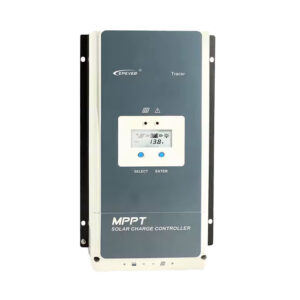- The main function of a PWM controller is to protect your battery by making sure solar panels have the same voltage as the battery. The voltage of the battery must match the “nominal voltage” of a solar panel—that is, the voltage the panel is marketed as having, even if the actual voltage can vary and often be slightly higher.
- As its name suggests, a PWM controller controls the flow by pulsing the power sent to the battery to slow down or speed up the charging. Some PWM controllers can only handle one voltage level, while others can handle different levels. Either way, the voltage of both the battery and panel must still be the same.
- PWM controllers are uncomplicated devices, though some can have additional features added to their essentially basic systems.
- A solar charge controller smooths out that variability so that batteries receive power at a constant and safe rate. It also sends a “trickle charge” when the battery is nearly full. Since batteries regularly lose a small amount of charge, a trickle charge keeps the battery topped off without overcharging it.
EPEVER , PWM,60amp,6048BN
KSh 18,000
Category: Solar Charge Controllers
Tags: Epever





